Microsoft Build 2025 underscored a strategic and technical inflection point: Artificial intelligence is no longer a feature—it is the architecture. From developer productivity to enterprise-wide transformation, Microsoft used this event to showcase how it embeds AI deeply into the development stack, enterprise infrastructure, and everyday workstreams. theCUBE Research analysis reveals this isn’t just timely—it’s necessary.
In our recent Enterprise AI Adoption Trends survey, 89% of organizations reported plans to deploy AI agents in production within the next 12 months, and over 70% cited platform trust and interoperability as key decision factors. Microsoft clearly understands this shift and is reshaping its platform accordingly. See figure 1.
Figure 1. theCUBE Research data supporting Microsoft Build 2025 announcements
Developers First Leveraging Copilots and the Phi-3 Frontier
In the session Fueling Developer Transformation with AI, Amanda Silver and Asha Sharma articulated Microsoft’s ambition to make AI tooling ubiquitous and personalized for every developer. GitHub Copilot, which now supports team-based configuration, context-aware prompting, and multi-agent support, was showcased as a tool and a development partner. Azure AI Studio also received significant upgrades—most notably, integrations with the newly expanded Phi-3 family of small language models (SLMs), optimized for on-device and edge applications.
According to theCUBE Research, 68% of developers working in enterprise environments believe that custom-tuned or domain-specific models will outperform general-purpose LLMs in business-critical scenarios by 2026. Microsoft’s investment in open-weight models, with responsible guardrails and developer-centered UIs, reflects an awareness that flexibility and control, not just raw model size, are now differentiators.
Building the Productivity Stack of the Future
CMOs Alysa Taylor and Jared Spataro led a forward-looking session titled Accelerating AI Readiness in the Enterprise. Their focus was on Microsoft 365 Copilot and the broader enterprise Copilot stack. Taylor introduced new features for Copilot Studio, enabling IT teams and business analysts to configure copilots using organizational data and pre-defined logic workflows. Spataro emphasized ROI: Microsoft now offers analytics dashboards that allow companies to measure Copilot’s impact on productivity, collaboration, and cognitive load reduction.
theCUBE Research data supports this framing. In a Q1 2025 benchmark survey, 82% of enterprises reported increasing budget allocations for AI productivity tools, and 58% expect a return on investment within 6–12 months. What’s more telling: 41% of early adopters said AI copilots had directly replaced some human tasks, primarily in document synthesis, meeting summarization, and repetitive reporting—yet 94% of them also reported net productivity gains and higher employee satisfaction. See figure 2.
Figure 2. theCUBE Research on the benefits of AI Tools
Voice of the Customer with Finastra and KPMG
In one of the more compelling moments of Build 2025, the Voice of the Customer panel featured leaders from Finastra and KPMG. These companies discussed how Microsoft’s Copilot and Azure OpenAI services are being operationalized—not in pilot sandboxes, but across regulated workflows.
Finastra shared its success in embedding AI into trade finance operations, achieving a 30% reduction in manual compliance interventions. KPMG illustrated how it’s using Microsoft’s AI services to automate audit workflows and deliver proactive risk insights. These examples reflect a key finding from theCUBE Research: 77% of successful AI deployments in the enterprise are tied to narrow, domain-specific use cases with well-defined ROI metrics. Microsoft’s partner ecosystem strategy is aligned with that insight.
Announcements Including Agents, Platforms, and Windows Reimagined
Satya Nadella’s keynote teased what Microsoft calls a new generation of “AI agents”—intelligent, proactive systems that do more than respond. With the updated GitHub Copilot Extensions and integration of multi-agent orchestration in Microsoft 365, users can delegate multi-step tasks, chain workflows across applications, and even automate data retrieval and formatting without scripting.
Windows 11 also received attention with the “Cross Device Resume” announcement, a feature that allows session continuity across multiple devices. While this may seem like a consumer play, it ties into a broader AI coordination narrative: intelligent, connected, and always-on agents across devices. This is aligned with theCUBE Research’s projection that by 2026, over 50% of enterprise workflows will involve at least one AI agent or autonomous software routine.
Microsoft’s AI Ambition Is Platform-Centric and Partner-Led
Microsoft Build 2025 reinforces Microsoft’s collaborative posture: the future of AI is not a zero-sum race, but a community-driven platform shift. theCUBE Research analysis concludes that Microsoft’s biggest strength lies in AI capabilities and its ability to orchestrate across tools, partners, and industries. In a market increasingly shaped by platform consolidation and enterprise readiness, Build 2025 sent a clear message: Microsoft is not chasing AI hype—it’s engineering its AI stack to meet the enterprise where it is, and where it’s going.
Future For Microsoft and the Next Phase of Enterprise AI Integration
As Microsoft exits Build 2025, it does so with a refreshed product lineup and a recalibrated AI strategy that positions it at the center of enterprise digital transformation. The future outlook for Microsoft—and the broader enterprise AI ecosystem—is defined by a few key strategic vectors: platform cohesion, agent-based automation, and responsible customization.
From an analyst perspective, Microsoft’s differentiated strength is its ability to unify the developer and enterprise ecosystems through a common AI substrate. While competitors focus on model supremacy, Microsoft focuses on orchestration at scale—across Windows, Azure, GitHub, and Microsoft 365. This platform-centric approach will be critical as enterprises demand more control over data provenance, regulatory compliance, and domain-specific optimization. theCUBE Research forecasts that by 2027, 60% of large enterprises will require AI tools to integrate seamlessly with proprietary data and business logic before approving wide-scale deployments. Microsoft is already delivering on that future with Copilot Studio, Azure AI Studio, and the expanding Phi-3 family.
The introduction of multi-agent systems marks another inflection point. Rather than positioning Copilots as assistants limited to reactive queries, Microsoft is pioneering an agent-first vision, where AI completes tasks and proactively initiates them. This shift reflects a broader trend: AI is becoming an operational participant, not just a productivity enhancer. For CIOs and CTOs, this means evolving their architecture and governance models to accommodate continuous AI-driven workflows.
Microsoft’s trajectory will depend on how well it balances innovation with trust. Protests at Build 2025 were a timely reminder that enterprise buyers are increasingly concerned with ethical alignment. The future of AI adoption will be shaped as much by model performance as by public accountability and transparent usage policies.
Analyst Bottom Line
Microsoft is not just iterating on AI—it’s standardizing it as infrastructure. Its ability to offer enterprises composable, secure, and scalable AI services across productivity, development, and business operations makes it uniquely positioned to lead in the enterprise AI era.
The following 12–18 months will test whether Microsoft can maintain this momentum through technical execution, ethical leadership, and global partnership alignment. Microsoft is emerging as a safe and strategic choice for enterprise buyers, particularly for organizations looking to operationalize AI with governance, extensibility, and measurable outcomes at the core.



